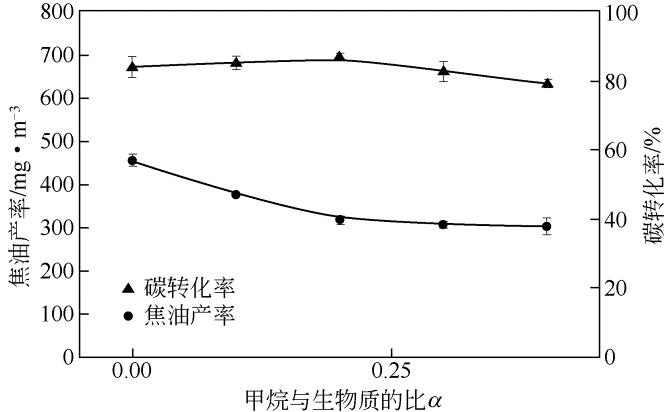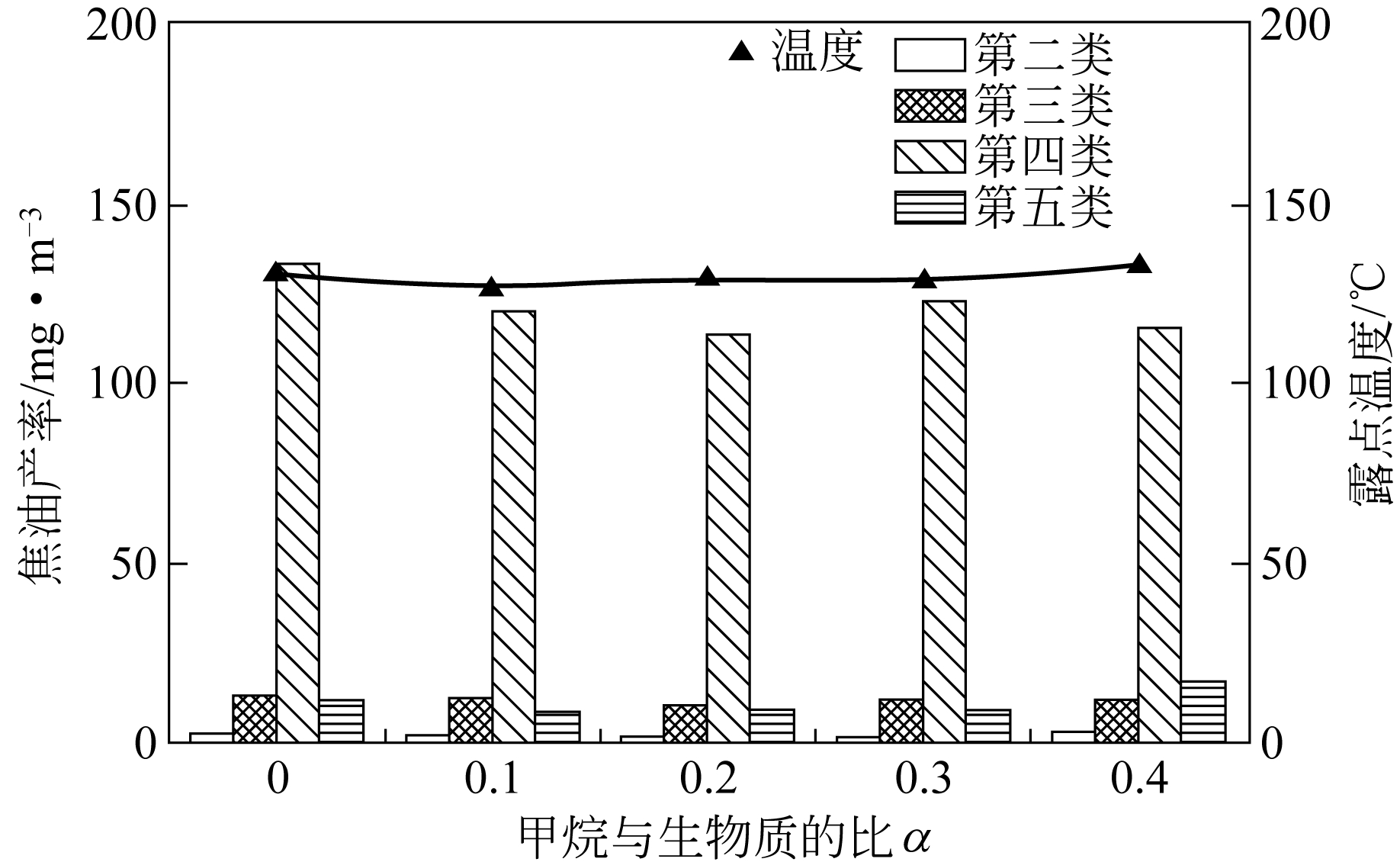| 1 |
CHUM H L , OVEREND R P . Biomass and renewable fuels[J]. Fuel Processing Technology, 2001, 71(1/2/3): 187-195.
|
| 2 |
RIOS M L V , GONZÁLEZ A M , LORA E E S , et al . Reduction of tar generated during biomass gasification: a review[J]. Biomass and Bioenergy, 2018, 108: 345-370.
|
| 3 |
PALLOZZI V , CARLO A D , BOCCI E , et al . Combined gas conditioning and cleaning for reduction of tars in biomass gasification[J]. Biomass and Bioenergy, 2018, 109:85-90.
|
| 4 |
FENG D , ZHAO Y , ZHANG Y , et al . Roles and fates of K and Ca species on biochar structure during in-situ tar H2O reforming over nascent biochar[J]. International Journal of Hydrogen Energy, 2017, 42(34): 21686-21696.
|
| 5 |
陈汉平, 杨海平, 李斌,等 . 生物质流化床气化焦油析出特性的研究[J]. 燃料化学学报, 2009, 37(4):433-437.
|
|
CHEN H P , YANG H P , LI B , et al . Evolving characteristics of tar during biomass fluidized bed gasification[J]. Journal of Fuel Chemistry and Technology, 2009, 37(4):433-437.
|
| 6 |
LIU S , MEI D , NAHIL M A , et al . Hybrid plasma-catalytic steam reforming of toluene as biomass tar model compound over Ni/Al2O3 catalysts[J]. Fuel Processing Technology, 2017, 166: 269-275.
|
| 7 |
李斌, 陈汉平, 杨海平,等 . 生物质水蒸气气化制氢模拟研究[J]. 可再生能源, 2012, 30(2):58-61.
|
|
LI Bin , CHEN Hanping , YANG Haiping , et al . Simulation study of biomass steam gasification for hydrogen production[J]. Renewable Energy Resources, 2012, 30(2): 58-61.
|
| 8 |
TURSUN Y , XU S , WANG G , et al . Tar formation during co-gasification of biomass and coal under different gasification condition[J]. Journal of Analytical and Applied Pyrolysis, 2015, 111:191-199.
|
| 9 |
HEYNE S . Process integration opportunities for synthetic natural gas (SNG) production by thermal gasification of biomass[J]. Acta Chimica Sinica, 2010, 18(6): 260-266.
|
| 10 |
HOSSEINI M , DINCER I , ROSEN M A . Steam and air fed biomass gasification: comparisons based on energy and exergy[J]. International Journal of Hydrogen Energy, 2012, 37(21): 16446-16452.
|
| 11 |
贾爽, 应浩, 孙云娟,等 . 生物质水蒸气气化制取富氢合成气及其应用的研究进展[J]. 化工进展, 2018, 37(2): 497-504.
|
|
JIA Shuang , YING Hao , SUN Yunjuan , et al . Research advance in biomass steam gasification for hydrogen-rich syngas and its application [J]. Chemical Industry and Engineering Progress, 2018, 37(2): 497-504.
|
| 12 |
李洪亮, 李金鸿, 李彦豪,等 . 稻壳在水蒸气中气化实验研究[J]. 化工进展, 2017, 36(11): 4017-4021.
|
|
LI Hongliang , LI Jinhon , LI Yanhao , et al . The research of rice husk gasification in steam[J]. Chemical Industry and Engineering Progress, 2017, 36(11): 4017-4021.
|
| 13 |
WU J , YITIAN FANG A , WANG Y , et al . Combined coal gasification and methane reforming for production of syngas in a fluidized-bed reactor[J]. Energy and Fuels, 2005, 19(2): 512-516.
|
| 14 |
PALUMBO A W , JORGENSEN E L , SORLI J C , et al . Co-processing methane in high temperature steam gasification of biomass[J]. Bioresource Technology, 2013, 128(1): 553.
|
| 15 |
NAKYAI T , AUTHAYANUN S , PATCHARAVORACHOT Y , et al . Exergoeconomics of hydrogen production from biomass air-steam gasification with methane co-feeding[J]. Energy Conversion and Management, 2017, 140: 228-239.
|
| 16 |
ARTETXE M , NAHIL M A , OLAZAR M , et al . Steam reforming of phenol as biomass tar model compound over Ni/Al2O3, catalyst[J]. Fuel, 2016, 184: 629-636.
|
| 17 |
邓文义, 于伟超, 苏亚欣,等 . 生物质热解和气化制取富氢气体的研究现状[J]. 化工进展, 2013, 32(7): 1534-1541.
|
|
DENG Wenyi , YU Weichao , SU Yaxin ,et al . A review of pyrolysis and gasification of biomass for production of hydrogen-rich gas [J]. Chemical Industry and Engineering Progress, 2013, 32(7): 1534-1541.
|
| 18 |
WALAWENDER W P , HOVELAND D A , FAN L T . Steam gasification of pure cellulose. 1. Uniform temperature profile[J]. Industrial & Engineering Chemistry Process Design & Development, 1985, 24(3):813-817.
|
| 19 |
Tersites . The ECN tar dew point site.
|
| 20 |
YU H , XU Y , CHEN G , ET AL . Experimental study on partial oxidation reforming of pyrolysis tar over sewage sludge char[J]. Energy and Fuels, 2016, 30(11): 9379-9385.
|
| 21 |
SHARMA R K , HAJALIGOL M R . Effect of pyrolysis conditions on the formation of polycyclic aromatic hydrocarbons (PAHs) from polyphenolic compounds[J]. Journal of Analytical and Applied Pyrolysis, 2003, 66(1/2): 123-144.
|
 ),Yang LIU,Haimiao YU(
),Yang LIU,Haimiao YU( )
)






